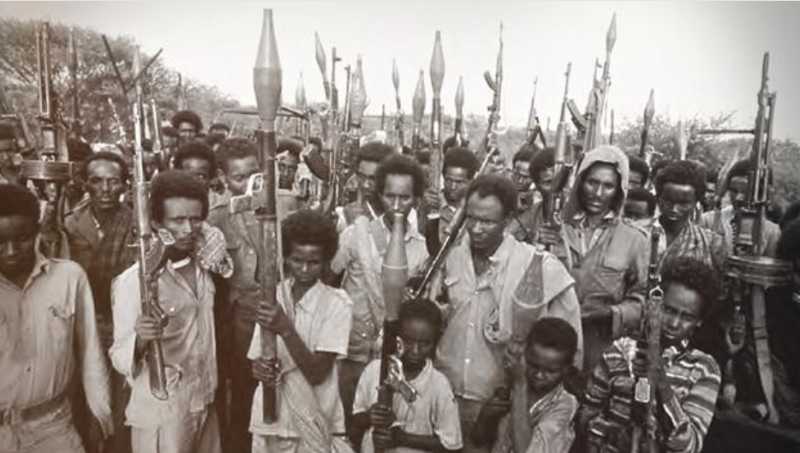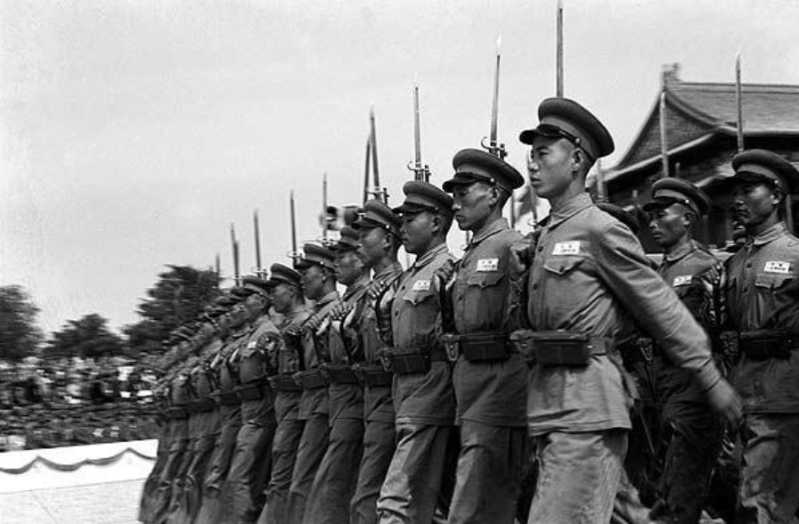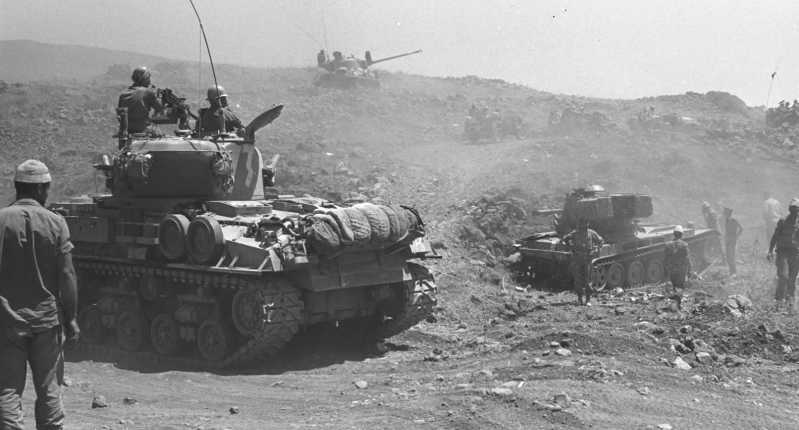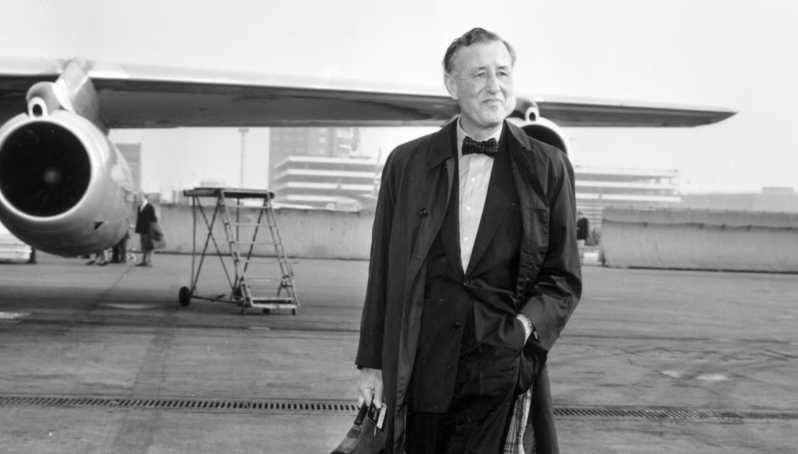After Somalia gained independence in 1960, the leaders of the Somali Republic have been trying to merge all the areas inhabited by Somalis and establish a strong unified nation-state in the "Horn of Africa", namely "Greater Somalia", which eventually broke out in the Ogaden War with Ethiopia. This article is mainly based on Russian literature, as well as Chinese and English literature, and will detail the history of this war.
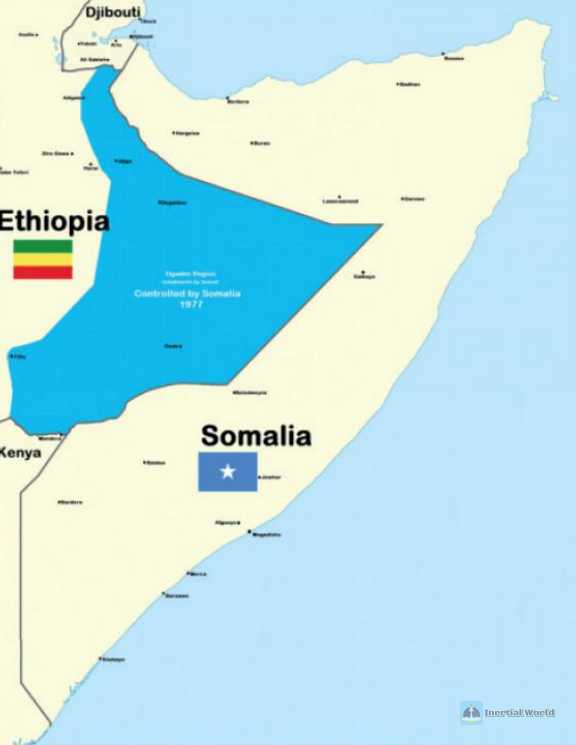
Attack
On July 23, 1977, the Somali army began a full-scale attack on Ethiopia. The Somali army launched an attack on the Ogaden region from the north, center and south. The Somali army dispatched 12 mechanized infantry brigades, 250 tanks, 600 artillery pieces, and a total force of 42,000 people. The Somali ground forces also received support from the Air Force with more than 50 aircraft, including 35 MiG-21MF and 15 MiG-17 fighters.
The attacking Somali army had an advantage in both manpower and equipment. Although the Ethiopian army had a large number of troops, they were distributed throughout the country. In the Ogaden region, there were only the 3rd Infantry Division and the 5th Militia Division. The 3rd Infantry Division had only 10,200 people, 45 M-41 and M-47 tanks, 48 various types of mountain guns and mortars, and 40 40mm Bofors anti-aircraft guns. Moreover, the limited manpower of the 3rd Infantry Division was dispersed to various places along the border, and it was impossible to concentrate its forces. The tactics of the Somali army were very clear. They did not get entangled with the Ethiopian army on the border. They gave full play to the breakthrough ability of the mechanized troops, concentrated their superior forces to break through the border defense line of the Ethiopian army, bypassed the tightly defended areas, and penetrated into the rear of the Ethiopian army. On July 24, 1977, Ethiopia publicly condemned Somalia for the first time and announced a national general mobilization.
Although the Somali army placed its main force on the north line, and the central and southern lines were only assists, it was on the central and southern lines that the Somali army achieved great success. Because the main force of the Ethiopian army was placed in the north of Ogaden, there were few troops stationed in the central and southern parts of Ogaden, and the distance between the strongholds was far. This created good conditions for the Somali army to split and break through. On the southern and central lines, the front line was close to Mogadishu, the capital of Somalia, and it was easier for the Somali army to obtain supplies. Moreover, among the residents in these areas, Somalis accounted for the majority. The actions of the Somali army were strongly supported by local Somalis. Therefore, the Somali Army achieved great results with very few troops on the southern and central fronts. By September 1977, the Somali Army had advanced as much as 700 kilometers on the central front, and on the southern front, the Somali Army had advanced about 300 kilometers, and was only stopped in the town of Imi.
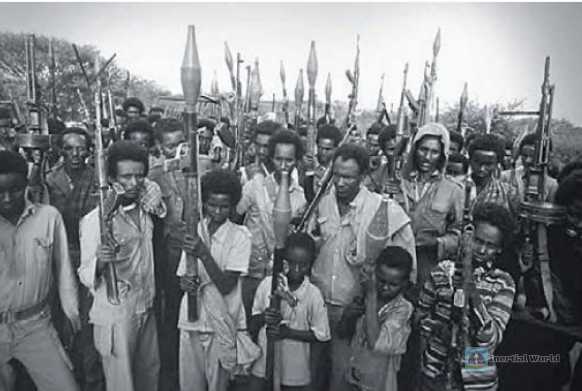
The only stubborn resistance encountered by the southern line troops was in Gode City. The southern line troops had occupied Dagubur and Kebridhal in a few days, and only Gode City was still resisting in the southern Ogaden. The Somali Army then turned its attack focus to the city. More than 10,000 Somali National Army and "Western Somali Liberation Front" troops were involved in the attack on Gode City.
The stubborn resistance of the Ethiopian defenders repelled the first two rounds of attacks by the Somali Army. After that, the Somali army sent another 5,000 troops to that direction, bringing the total number of Somali troops besieging the city of Gode to 15,000. The Somali Air Force dispatched MiG-21F to bomb the Gode Air Force Base. In addition to MiG fighters, the Somali Air Force even used modified An-26 transport aircraft to drop bombs. By July 25, the Somali army had destroyed a total of 8 Ethiopian Air Force fighters in a 4-day air strike. However, the Ethiopian air defense force also caused considerable losses to the Somali Air Force. The Ethiopian army used various air defense weapons, including ZSU-57-2 self-propelled anti-aircraft guns and S-125 air defense missiles, to attack the Somali fighters that were bombing at low altitudes. Since the Soviet Union had stopped its military aid to Somalia, the Somali Air Force was unable to replenish the lost aircraft in time and could not bear such losses. Therefore, the Somali Air Force quickly stopped bombing the Gode Air Force Base.

Although the offensive on the southern and central lines was smooth, the offensive of the Somali army on the northern line was stubbornly blocked and progressed slowly. Because the northern line is the key to determining the fate of Ogaden. The importance of Dire Dawa is self-evident. The Ethiopian army has placed the main force of the 3rd Infantry Division outside Dire Dawa. The only mechanized brigade of the Ethiopian army is also deployed there. In fact, as early as July 17, before the full invasion of the Somali army, the "Western Somali Liberation Front" began to attack Dire Dawa. However, due to the lack of heavy weapons, their attack was eventually repelled by the 75th Militia Brigade and the 4th Artillery Battalion of the Ethiopian Army defending the city. The Ethiopian army paid the price of 79 dead and 8 wounded, while the casualties of the Western Somali Liberation Front were twice that of the Ethiopian army. After the full-scale offensive on July 23, the Somali army on the northern front quickly reached the suburbs of Harar and Dire Dawa, but encountered stubborn resistance in these two cities and failed to advance further. Elsewhere on the northern front, the Somali army was successful, but due to the lack of sufficient artillery and air support, the Ethiopian army could not hold its position.

By July 25, most of the 5th Infantry Brigade of the Ethiopian Army defending the southern Ogaden was annihilated, and the 79th Militia Brigade also suffered heavy losses. However, the 12th Infantry Brigade of the Ethiopian Army still managed to hold on to Deghebur for two weeks, withstood the Somali army’s round after round of offensives, and finally retreated safely. By early August 1977, the Somali army had occupied important towns such as Gode, Deghebur, and Doro. More than 90% of the territory of the Ogaden region of Ethiopia was occupied by the Somali army. Only the triangle area of Harar-Dre Dawa-Jigiga in the north of Ogaden was still in the hands of the Ethiopian army. Both the Ethiopian and Somali armies transferred more and more troops to this direction, because the situation was clear. As long as the Somalis captured this area, Ethiopia might withdraw from the war. If the Ethiopian army defended this area, it could wait for the arrival of foreign aid, re-arm and repel the Somali army.
In order to reverse the situation, the Ethiopian authorities decided to reorganize the command system and divide the entire Ogaden front into two combat zones. Colonel Malaeiman was fully responsible for the command of the Ogaden war. Colonel Malaeiman sent the People’s Revolutionary Guard to reinforce the 3rd Infantry Division and the 5th Militia Division. They must hold the crucial triangle of Harar-Dire Dawa-Jijiga to keep the Addis Ababa-Djibouti railway and highway, so that Ethiopia can always get unobstructed access to foreign aid.
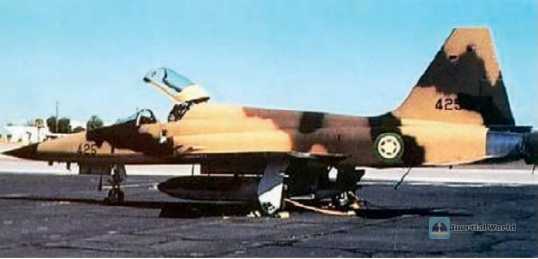
On August 10, 1977, the Somali army launched another attack on Dire Dawa. This time they almost succeeded. Because the Ethiopian military command believed that the focus of the Somali army’s attack should be Jijiga and Harar southeast of Dire Dawa, all reinforcements were sent to these two cities, and Dire Dawa’s defense was very empty. The Ethiopian army defending Dire Dawa only had the 781st Battalion of the 78th Infantry Brigade, the 201st People’s Revolutionary Guard Battalion, the 4th Mechanized Company, and a tank platoon with only 2 tanks. The attacking Somali army dispatched as many as 2 mechanized infantry brigades, 1 tank brigade and 1 rocket artillery battalion.
At 4:30 a.m., the Somali army’s BM-13 "Katyusha" rocket launchers began to bombard the Ethiopian army’s positions in Dire Dawa. Subsequently, the 15th Mechanized Infantry Brigade of the Somali Army, reinforced by 2 tank battalions and anti-aircraft artillery, began to attack Dire Dawa. Because the Ethiopian army had too few troops and lacked artillery, the Somali army quickly broke through the Ethiopian army’s defense, attacked the suburbs of Dire Dawa, and approached Dire Dawa Airport.
At the critical moment, the attack of the Ethiopian Air Force turned the tide of the battle, and its F-5E and F-5F were fully dispatched to bomb the attacking Somali army. In the first wave of attacks, the Ethiopian Air Force suppressed the Somali army’s anti-aircraft artillery, and then the Ethiopian Air Force was able to bomb the Somali army at low altitude without interference. The Somali army’s "Katyusha" rocket launcher was also blown up by the Ethiopian Air Force. On August 10, the Ethiopian Air Force dispatched a total of 68 sorties, and even the bulky "Canberra" bomber participated in the air strike. The Ethiopian Air Force’s actions severely damaged the Somali army’s mechanized column. According to the confessions of Somali prisoners captured by the Ethiopian Army, the 15th Mechanized Infantry Brigade and its reinforced forces lost 80% of their equipment and 40% of their personnel in the air strike on August 10.
Although the losses were heavy, the Somali army did not give up the attack on Dire Dawa, because the Somali army had learned that the number of defenders in Dire Dawa was very small and it was difficult to organize an effective defense. On the night of August 10, after a reorganization, the Somali army launched another attack on Dire Dawa. The main force of this attack was the 14th Mechanized Infantry Brigade and the six reinforced companies. This time, the god of luck was on the side of the Somalis. Due to heavy rain, the planes could not be deployed, so the Somali army was able to attack the city of Dire Dawa and surrounded the Dire Dawa Air Base. The Ethiopian army defending the base used all available weapons to attack the Somali army, even anti-aircraft guns and anti-aircraft missiles. Unfortunately, the Somali army was outnumbered and lacked air support, so the Dire Dawa Air Base was eventually occupied by the Somali army. However, the Somali army’s good luck soon ran out. On August 12, the weather began to clear up, and the Ethiopian Air Force once again dispatched to attack the Somali army attacking Dire Dawa. An Ethiopian tank battalion deployed in Harar also began to move to Dire Dawa to counterattack the Somali army that entered the city of Dire Dawa. In the end, the Somali army’s attack ended in failure again. From August 10 to August 25, within two weeks, the Somali army launched a total of three attacks on Dire Dawa, all of which failed, at the cost of 500 deaths, and the Ethiopian army defending the city also lost 150 people.
After the defeat in Dire Dawa, the Somali Army began to attack Jijiga, east of Dire Dawa. Because the Somali Army had realized that with the help of the Soviets, the Ethiopian Army was constantly airlifting reinforcements to Jijiga. This posed a huge threat to the Somali Army’s flank attacking Dire Dawa. If Jijiga could not be taken, the Somali Army would not be able to let go and attack Dire Dawa with all its strength. The Somali Army dispatched the 5th, 8th, 9th, and 10th Mechanized Infantry Brigades to besiege Jijiga.

In order to prevent the airlift of reinforcements, the Somali Air Force began to dispatch MiG-21MF fighters to attack Soviet and Ethiopian transport planes taking off and landing at Jijiga Airport. On August 20, 1977, a Soviet Il-76 transport plane was intercepted by two Somali Air Force MiG-21MFs just after taking off from Jijiga Airport. When the two fighters were about to attack the Il-76, they were attacked by two Ethiopian Air Force F-5Es. The MiG-21MF fired air-to-air missiles, which were avoided by the F-5Es. The MiG-21MF, which had used up all its air-to-air missiles, began to flee, but was pursued by a two-plane formation of F-5Es commanded by Colonel Tasdek. The F-5Es fired two AIM-9Ds, one of which was successfully shaken off by the Somali pilot, but the second exploded near the tail of a MiG-21MF. The MiG-21MF was damaged but still able to fly. The Ethiopian F-5Es continued to attack the MiG-21MF with machine guns, eventually blowing it up in mid-air.

After this air battle, the Somali Air Force gave up the attempt to intercept the transport plane and continued to focus on ground attacks. In order to capture Jijiga, the Somali Army assembled an absolute superior force. According to reports from Ethiopian Air Force pilots, the number of Somali tanks and armored vehicles operating in the direction of Jijiga exceeded 250. The Somali T-54 and T-55 tanks were superior to the Ethiopian M-41 and M-47 tanks in terms of firepower and armor protection. In the battle of Jijiga, the Somali tank troops destroyed a total of 9 M-41 and 14 M-47 tanks of the Ethiopian Army.
Although the Ethiopian tanks could not compete with the Somali army, the Ethiopian anti-tank weapons achieved brilliant results in Jijiga. On the defense lines around Jijiga, the Ethiopian army deployed a large number of anti-tank guns at a very high density and laid anti-tank mines in the direction where the Somali army might break through. As a result, the attacking Somali army suffered heavy losses. In the battle of Jijiga, the Somali army lost a total of 45 tanks. In early September, in order to break the deadlock on the Jijiga front, the Somali Air Force dispatched a squadron of Il-28s to carry out low-altitude bombing of Jijiga. Since the beginning of the war, the Ethiopian army has never been subjected to such a fierce air strike, and the morale of the Ethiopian army defending the city began to waver. On September 10, 1977, the Ethiopian defenders abandoned the city of Jijiga and began to retreat. The mechanized forces of the Somali army then occupied the city of Jijiga. This is also the biggest victory of the Somali army in the northern Ogaden since the beginning of the war.
The fall of Jijiga brought disastrous consequences to the Ethiopian army. The northern front of the Ethiopian army, which had been strong since the beginning of the war, began to collapse. The Somali tank troops and mechanized infantry began to pursue the Ethiopian army that abandoned the city and fled. During the pursuit, on September 29, the Somali army occupied the crucial Malda Pass without a fight, and the gate of Harar was wide open in front of the Somali army. In the southern and central Ogaden, the Somali army was like entering a no-man’s land. Three brigades penetrated 300 to 700 kilometers into Ethiopia, capturing cities along the way.
The southern line of the army first captured the Ethiopian border town of Dolo Odo, and then advanced along the highway all the way to the Negle area in central Ethiopia before stopping. On the central line, due to the weak strength of the Ethiopian army, the Somali army occupied the town of Elkere with only one battalion. Because the offensive on the southern front was too smooth, the Somali Army Command ordered two of the three brigades on the southern front to be transferred to the northern front for reinforcement. The Somali Army on the southern front marched northward and soon reached the town of Fike, encountering almost no decent resistance along the way. At this time, the Ethiopian army was closer to defeat than ever. The Ethiopian Military Committee ordered the execution of more than a dozen army officers who abandoned their positions, and all Ethiopian troops received orders to kill officers and soldiers who retreated without receiving orders. Mengistu announced a national mobilization in Ethiopia, and all men under the age of 60 were required to join the army. The Ethiopian Military Committee put forward the slogan of "defending the revolutionary motherland to the death." However, the September offensive was also the limit of the Somali army’s strength. From late September, it was the autumn rain season in Ethiopia, and the continuous autumn rain made the roads muddy. It was difficult for the Somali Army’s tanks and armored vehicles to continue to move forward. In addition, since the start of the war, the Somali Army has also suffered huge losses and was unable to continue to advance, and the war situation turned into a stalemate.

By October, both the Ethiopian and Somali armies had suffered heavy losses. According to Ethiopian officials, the Ethiopian army shot down a total of 23 Somali fighters, 10 of which were shot down by Ethiopian Air Force F-5E fighters, and the rest were shot down by anti-aircraft artillery fire. In addition to combat losses, since the Soviet Union had begun to stop providing military assistance to Somalia, the Somali Air Force’s aircraft could not get enough spare parts and adequate maintenance. Many aircraft were lost or unable to fly due to technical failures. Only 10 MiG-17s and MiG-21MFs were still available. The Somali Air Force deployed all 10 aircraft to Hargeisa Airport to support the battle on the northern front. The Ethiopian Air Force also suffered heavy losses. Gode Air Base has been captured, and the Ethiopian Air Force only has two air bases left in the Ogaden region, Dire Dawa and Gebridahal. In the battle at Gode Air Base, 8 Ethiopian Air Force fighters were destroyed on the ground. The Somali Air Force’s attack on Dire Dawa Air Base also destroyed the only two remaining "Canberra" bombers of the Ethiopian Air Force that were in good condition and could fly. Two F-5s of the Ethiopian Air Force were shot down by the Somali anti-aircraft guns. The Ethiopian Air Force lost about a dozen aircraft. The Ethiopian Army lost 50 tanks. The Somali Army lost more tanks than the Ethiopian Army, but it was nothing compared to the huge number of Somali tanks.
(To be continued)


